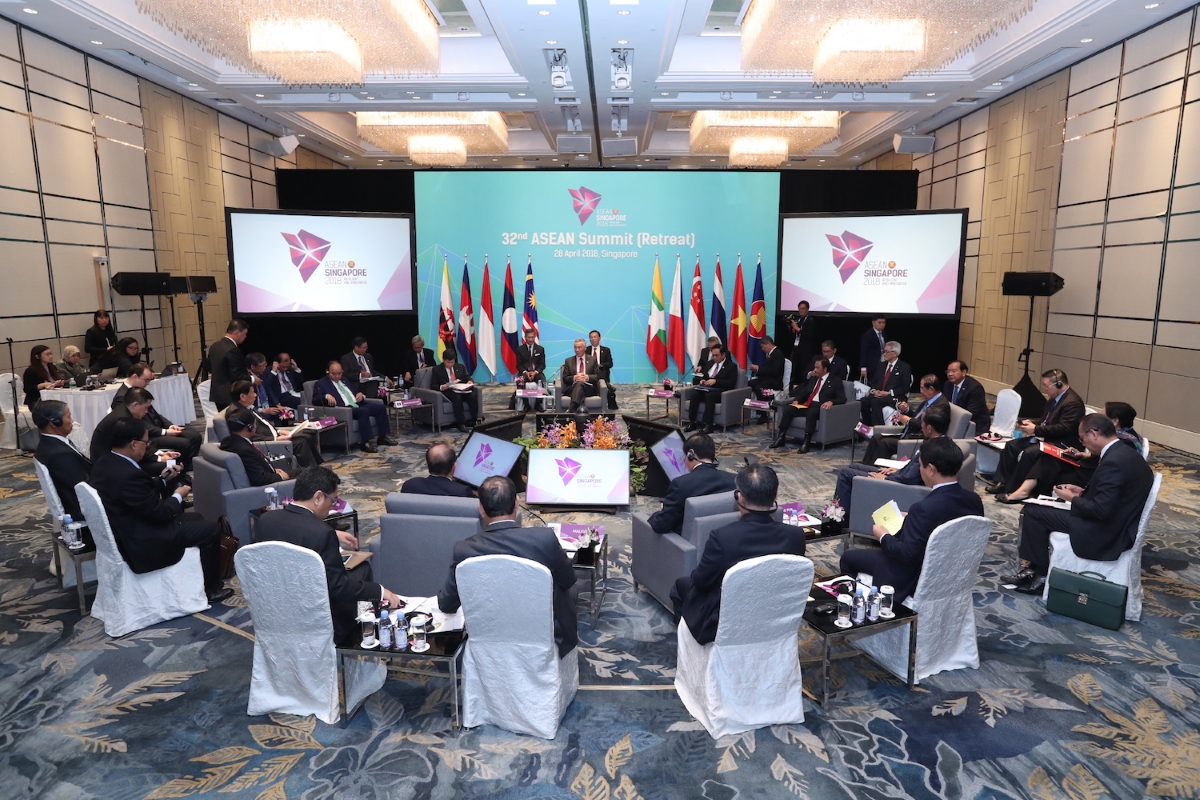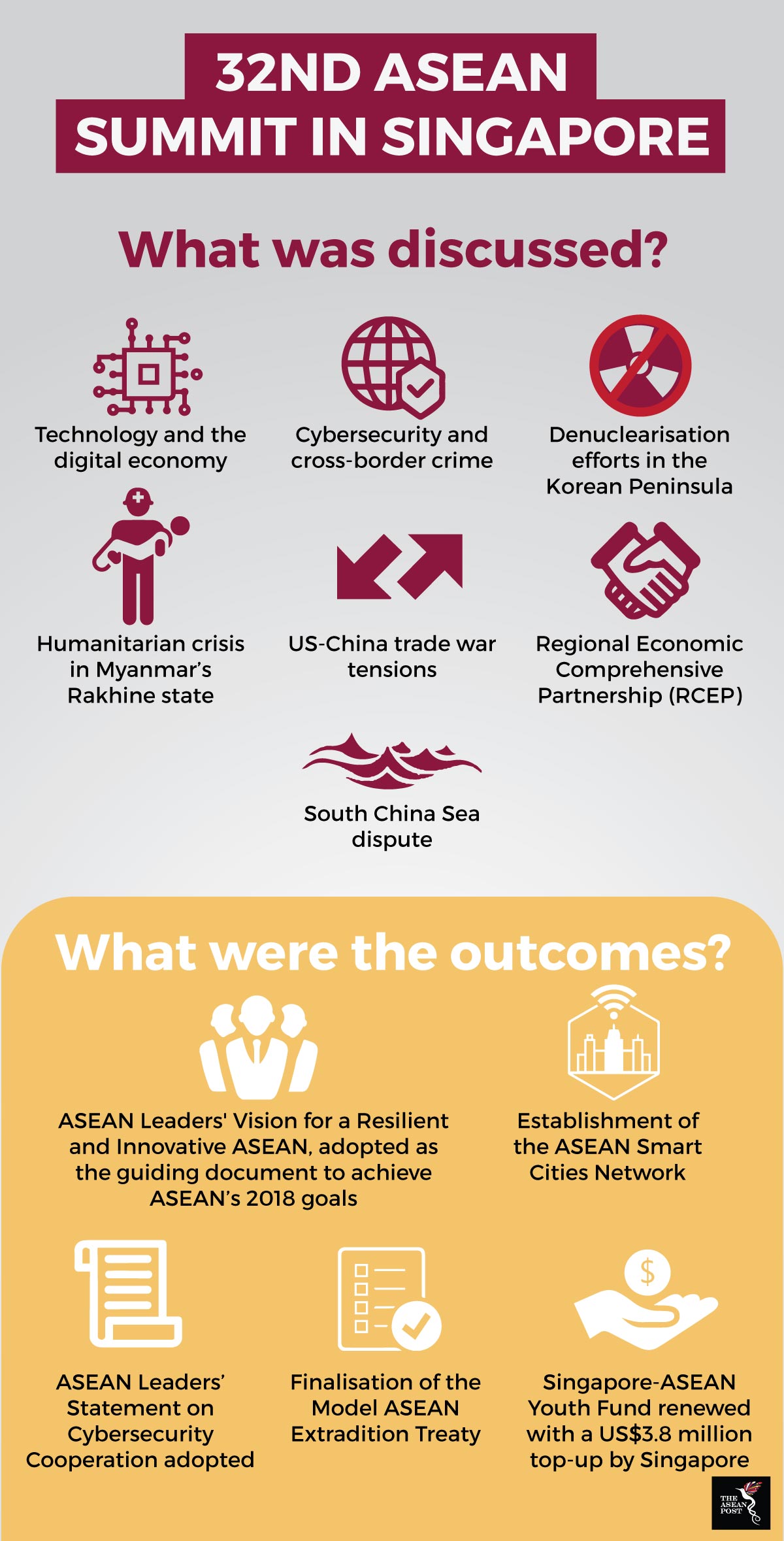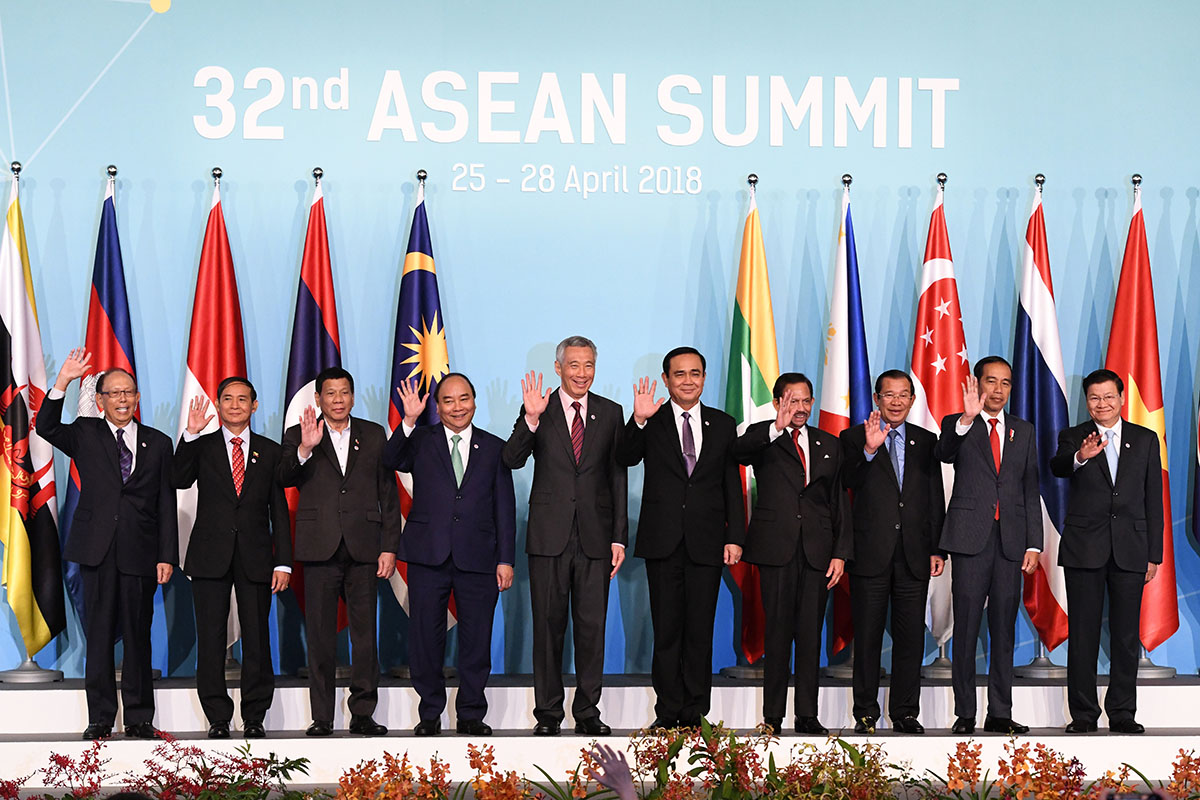Singapore can check one thing off its to-do-list for its chairmanship of the Association of Southeast Asian Nations (ASEAN) for the year – the successful completion of the 32nd ASEAN Summit. This curtain raiser summit has set the stage for the island republic’s aspirations for ASEAN throughout the year.
Leaders adopted the ASEAN Leaders' Vision for a Resilient and Innovative ASEAN which sets forth the association’s goals for the year, whilst taking into account the shifting geopolitical and economic realities in the world today.
Hot button issues
The issues discussed at ASEAN Summits can be categorised under three broad themes – current issues, ASEAN Community agendas and the chairman’s ambitions.
Singapore’s theme of resilience and innovation captured these three overarches perfectly. In terms of current issues like trade war tensions, denuclearisation of the Korean Peninsula and the South China Sea disputes, discussions were held in an informal setting during the heads of government retreat.

The heads of government retreat was held in an informal setting at the 32nd ASEAN Summit in Singapore.
ASEAN continues to maintain its stance on a peaceful settlement to the tensions in the Korean Peninsula, and called for “complete, verifiable, and irreversible denuclearisation.” The Regional Comprehensive Economic Partnership (RCEP) was brought up amid concerns over the ongoing trade spat between the United States (US) and China. The leaders reaffirmed their support for the global multilateral trading architecture and discussed ways to move faster on RCEP.
The South China Sea dispute, which has always been a hot button issue for ASEAN was not left out of conversations among ASEAN leaders. The language in the joint communique didn’t come off as watered down as if to imply deference to Chinese assertiveness. However, it was relatively optimistic about the future of the maritime contestations thanks to growing levels of cooperation between ASEAN and China. The only highlighted concern was land reclamation of which China and several ASEAN claimant states – Malaysia and Vietnam – are guilty of. No strong language condemning Chinese militarisation was evident. Non-militarisation was just emphasised so as to not derail the progress made with the Code of Conduct which is currently being negotiated.
Besides that, the humanitarian crisis unfolding in Myanmar’s Rakhine State was brought under the spotlight. ASEAN has always maintained that the issue is a domestic one although it could have regional implications. Along those lines, ASEAN urged for Myanmar to continue with the implementation of recommendations contained in the final report of the Advisory Commission on Rakhine State. Moreover, the association remained supportive of humanitarian relief efforts which it hopes to see result in the expedited, voluntary and safe return of refugees back to Myanmar.

Cybersecurity and cross-border crime was also deliberated upon. Amid the growing push towards digitalisation and the emergence of a multi-billion-dollar digital economy in the region, the ASEAN Leaders’ Statement on Cybersecurity Cooperation was adopted. This builds upon previous regional-level efforts to strengthen cybersecurity capacity building and policy coordination amongst member states. In terms of cross-border crime, the Model ASEAN Extradition Treaty was finalised in hopes to commence on an ASEAN Extradition Treaty in the future.
The Chairman’s agenda
The cornerstone of Singapore’s region-wide agendas for the year was the establishment of the ASEAN Smart Cities Network (ASCN). No other ASEAN member state is better poised at developing this idea than the island state which is the most technologically advanced country in the region.
The network aims to to synergise development efforts, share best practices, and catalyse more opportunities for growth, innovation, capacity-building and sustainable development. It will also help to promote an inclusive approach and take into account city-specific needs, potential, local and cultural uniqueness, as well as level of development. In total, 26 cities from all 10-member countries were listed as ASCN pilot cities.
Singapore also placed emphasis on ASEAN Community building efforts from a social perspective. The government revitalised the Singapore-ASEAN Youth Fund with a US$3.8 million top-up grant. The money would be used to intensify youth and community building efforts across the region. Already in the works are efforts for a region-wide e-sports competition – an ASEAN first. The ASEAN Law Academy, an annual training workshop for ASEAN officials and those in the legal field to promote ASEAN legal integration and education is another initiative.
The summit represented a holistic picture of what to expect in the region for the coming year. ASEAN is very much a reactive organisation in terms of worldwide geopolitical shifts, but Singapore’s chairmanship this year sees the association attempt to claw away from that label. Under its chairmanship, the goals set out to build a resilient and innovative ASEAN is farsighted and aims to not only build the mechanisms to take the region forward in the 21st century. It also contains provisions to empower the people of ASEAN and foster a “community feeling” amongst all 10-member states.
The pageantry accompanying the articulation of Singapore’s vision for ASEAN 2018 is now out of the way. It is now time for hard work and actual resilience and innovation to see these efforts through.
